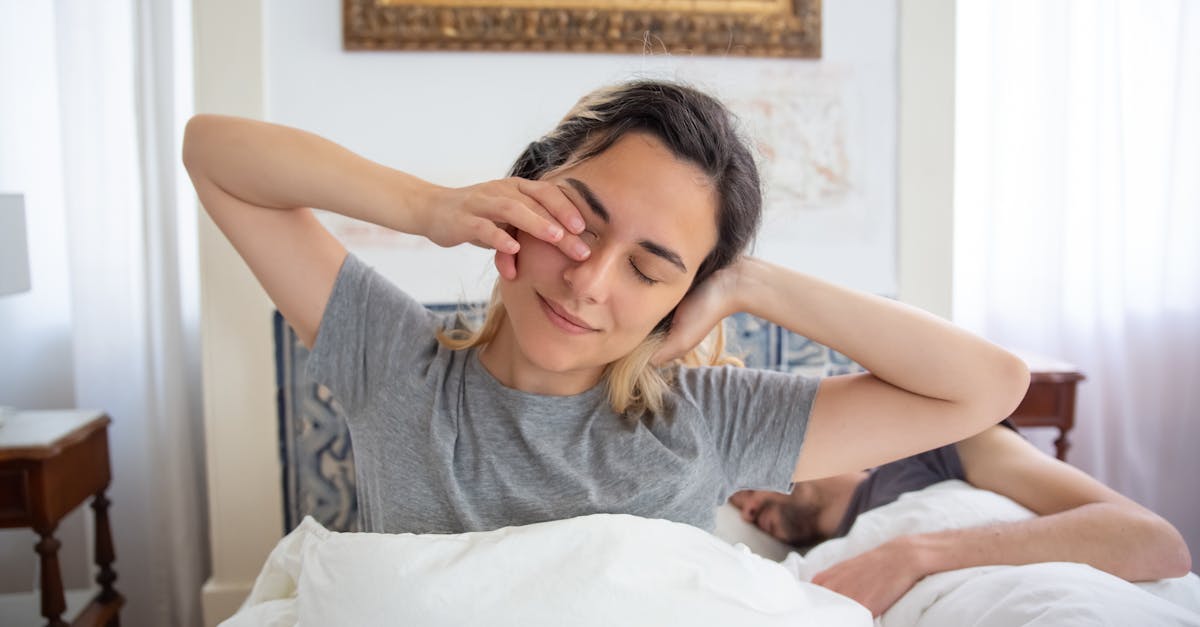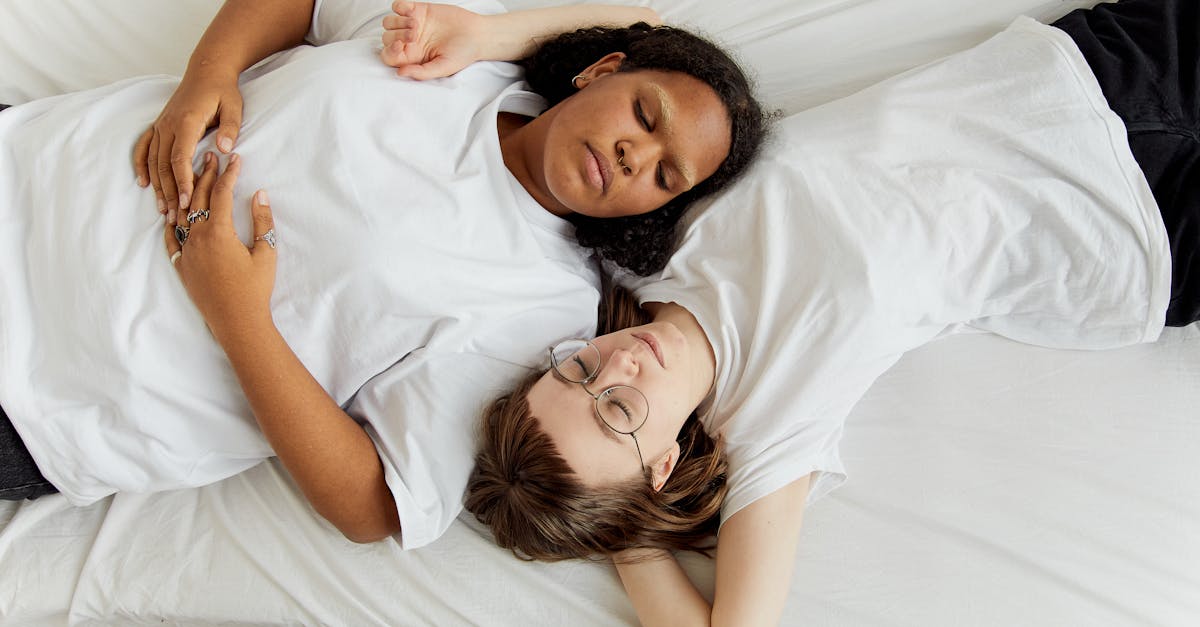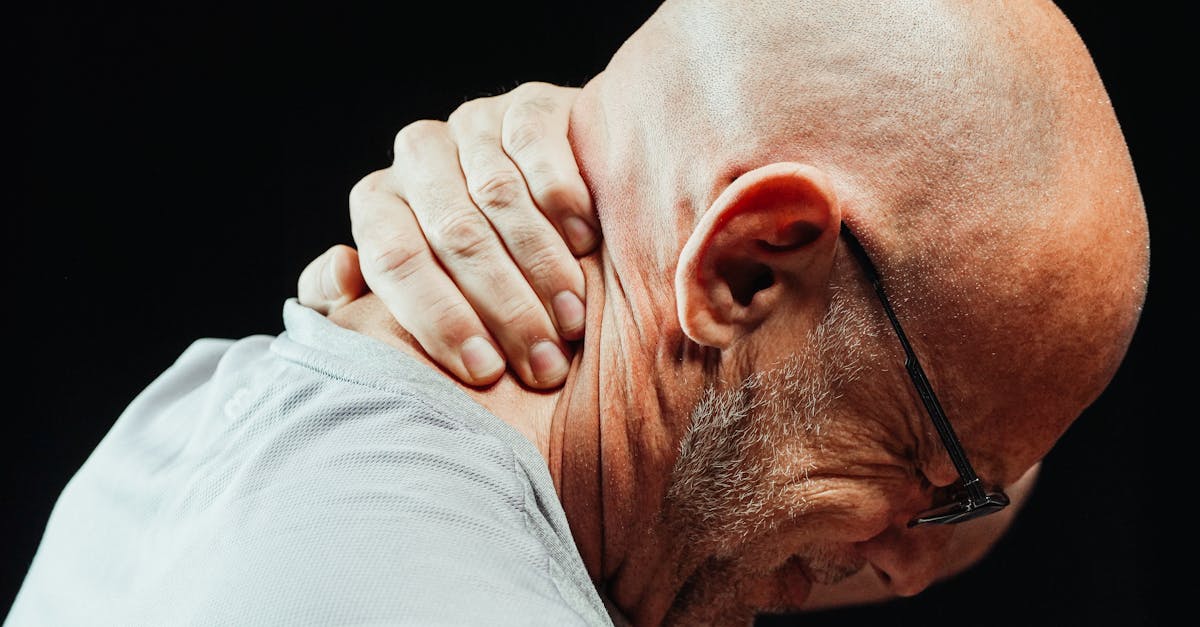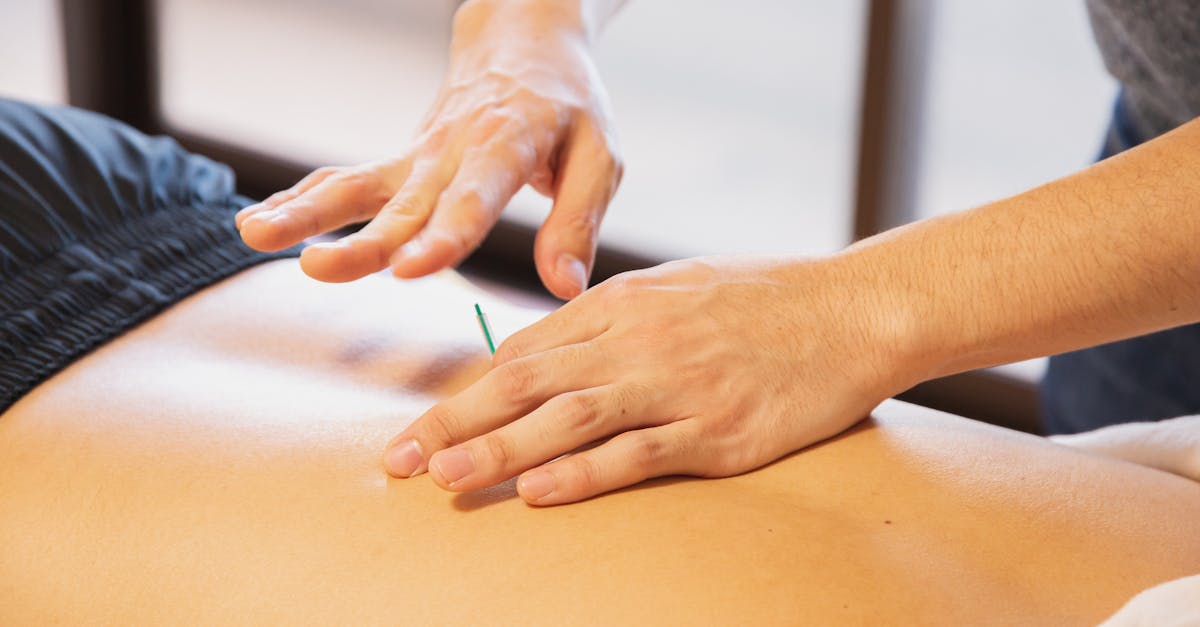Troubled by lower back pain at night? Explore Better Sleep Positions with Pulse Align.
In Short: Struggling with lower back pain disrupting your sleep? Discover the best sleep positions for back pain to enhance your comfort and improve your rest. By shifting into supportive sleeping habits, you can reduce pain and discomfort, helping your body regain strength. Pulse Align promotes innovative and simple approaches to postural recalibration that aid in your wellness journey. Reclaim your health and wellness at Pulse Align Clinics. Book your appointment today!
Are you struggling with lower back pain and poor posture?
Troubled by back pain at night? Explore better sleep positions with Pulse Align to find effective lower back pain relief. Many people experience disruptive sciatica and lumbar pain that impacts their nightly rest. Studies show that a significant percentage of adults suffer from issues related to improper sleep postures, exacerbating conditions like herniated discs and spinal stenosis. Discover how adopting suitable sleep positions for back pain can significantly enhance your nightly recovery, leading to improved overall health. With a focus on core strengthening exercises and proper lifting techniques, Pulse Align offers a transformative approach to ensure you wake up pain-free and recharged.

If you’re struggling with back discomfort at night, you’re not alone. Many individuals find it challenging to achieve restful sleep due to issues with posture improvement and muscle tension. At Pulse Align, we understand the critical connection between sleep quality and your body’s natural alignment, offering insights into enhancing your sleep experience. Our gentle and effective approach focuses on neuromuscular recalibration, setting the stage for improved comfort and overall well-being.
The Gentle Touch of Pulse Align
Pulse Align emphasizes a holistic perspective, recognizing the importance of restoring muscle tone symmetry and achieving natural balance for optimal health. Our innovative practices involve gentle stimulation that aids the body in its natural tendencies to align and restore functionality. By focusing on functional balance, we support our clients in achieving a state where discomfort diminishes, allowing for a pain-free transition into restorative sleep.
Enhancing Natural Healing
Many clients have experienced the holistic advantages of incorporating Pulse Align into their wellness routines. Testimonials often highlight how addressing posture has led to greater comfort at night, enabling them to reduce neck discomfort and overall tension. Through expert guidance, you can discover how to improve your posture naturally with the support of effective muscle tone recalibration that enhances your night’s rest.
Your Path to Restful Sleep Begins Now
Are you ready to prioritize your sleep and comfort? We invite you to explore your local Pulse Align clinics in cities like Montreal, La Prairie, Terrebonne, Chicoutimi, Charlesbourg, Saint-Jérôme, Châteauguay, Sainte-Marie, Les Escoumins, Granby, and Panama City. Our gentle, family-friendly approach is safe for individuals of all ages, including children and pregnant women. Experience the difference by booking a consultation with us today and begin your journey toward achieving improved wellness alongside your healthcare team.
- Sleep on your back: Keeps your spine aligned for optimal support.
- Side sleeping with a pillow: Reduces pressure on your lower back.
- Avoid stomach sleeping: Can strain your spine and neck.
- Use a medium-firm mattress: Provides consistent support through the night.
- Place a pillow between your knees: Helps maintain hip alignment.
- Experiment with knee positioning: Consider bends to relieve spinal pressure.
- Consider body pillows: For additional support and comfort.
- Maintain a sleep routine: Aids in overall sleep quality and pain management.

If lower back pain is disrupting your sleep, you’re not alone. Many individuals struggle with lumbar pain that exacerbates at night, making restful sleep a distant dream. This article presents practical solutions, focusing on how to improve your sleep posture and embrace techniques that align with low back pain relief. By exploring effective sleep positions and joining forces with Pulse Align, you can reclaim your nights, embrace comfort, and soften the effects of sciatica, herniated discs, and other back-related issues.
The Importance of Sleep Position for Back Pain Relief
Understanding the relationship between sleep positions and back health is crucial. Poor posture during sleep can lead to increased tension in your spine, aggravating existing conditions such as piriformis syndrome and spinal stenosis. Fortunately, by making conscious adjustments to your nighttime routine, you can alleviate discomfort and foster neuromuscular health through better sleep. Optimal positions that promote proper spinal alignment can be transformative for your overall well-being.
Best Sleep Positions for Lower Back Pain
For many, sleeping on their back can be the most beneficial. This position allows for the head, neck, and spine to rest in a neutral position, minimizing strain. Adding a supportive pillow can help maintain the spine’s natural curvature. If back sleeping feels uncomfortable, consider sleeping on your side with a pillow placed between your knees. This helps to keep your hips aligned, reducing stress on your lower back.
Avoid sleeping on your stomach, as this can lead to improper spinal alignment, putting pressure on your lower back muscles. If you must sleep this way, placing a pillow under your hips can help reduce tension while maintaining some comfort.
Exercises for Enhanced Back Support
Incorporating lower back pain exercises into your daily routine can further enhance your sleep quality. Focus on core strengthening exercises and pelvic tilts to support your spine and improve its natural alignment. Gentle lower back stretches before bedtime can also promote relaxation, easing muscle tension that might otherwise disrupt sleep.
Promoting Proper Lifting Techniques
In addition to sleep positioning, adopt proper lifting techniques throughout your day. Engaging your core and using your legs for lifting can significantly reduce strain on your back, mitigating pain both during the day and at night. Integrate this mindfulness of posture into your daily activities and proactively improve your overall comfort.
The Role of Ergonomics in Sleep Health
Investing in an ergonomic chair and practicing good posture while sitting can contribute significantly to reducing lower back pain. As you transition to sleep, the alignment you’ve maintained can support your body’s recuperative processes, enhancing your overall health and healing.
Take Action for Better Sleep
Ready to embrace better sleep and a pain-free existence? Consult with Pulse Align for personalized plans and recommendations tailored to your unique needs. Together, let’s explore holistic solutions designed to enhance your symmetry and promote effective recalibration of your nervous system through thoughtful techniques. Book a consultation today to empower your journey toward sciatica pain relief and a truly restful night’s sleep.
| Sleeping Position | Benefits for Wellness and Balance |
| On Your Back | This position helps maintain a neutral spine, promoting overall comfort and reducing tension. |
| On Your Side | This position can alleviate pressure points and support natural body curvature, encouraging restorative sleep. |
| With a Pillow Between Knees | Enhances spinal alignment, relieving strain on the lower back and hips while promoting relaxation. |
| On Your Stomach (with modifications) | May require pillow adjustments under hips to minimize back strain while allowing for comfort. |
| Using a Medium-Firm Mattress | Offers adequate support, promotes body alignment, and reduces pain by providing even pressure distribution. |
| Fetal Position | Reduces spinal compression and may provide comfort, especially for those with disc concerns. |
| Elevating Your Legs | Helps relieve pressure on the lumbar region while improving circulation and encouraging relaxation. |
| Adjustable Sleep Position | Allows for customized comfort, empowering individuals to find the position that best supports their healing journey. |
| Body Pillow Support | Provides additional cushioning and support for various sleeping positions, enhancing comfort and alignment. |
| Mindful Breathing Techniques | Incorporating deep breathing as you settle into sleep can foster a sense of tranquility and aid in relaxation, further supporting overall wellness. |

Transform Your Wellness Journey: Experience Better Sleep Positions with Pulse Align
Many clients have shared their experiences of finding relief from back pain at night through the unique approach offered by Pulse Align. Individuals in regions like La Prairie and Saint-Jérôme have particularly noted how the holistic practices at Pulse Align support the body’s natural ability to recalibrate and restore balance.
Clients have expressed their gratitude for the practical tips provided by Pulse Align, which emphasize the importance of optimal sleep positions. Reports suggest that after implementing these techniques, they have experienced not only improved sleep quality but also a reduction in discomfort that once plagued their nights. This positive change has significantly enhanced their overall wellness.
In Mont-Royal, Pulse Align’s reputation has grown as a trusted ally for those on their recovery journey. Clients have shared stories of how they’ve become more proactive in managing their back pain, feeling empowered to take control of their health. The effective strategies tailored to each individual’s needs have fostered a supportive community where healing is a shared goal.
Individuals residing in Châteauguay and Chicoutimi have also benefited from the integrative approach of Pulse Align. By working alongside healthcare teams, Pulse Align not only addresses the immediate effects of back pain but also encourages sustainable wellness practices that clients can incorporate into their daily lives.
For those in regions like Terrebonne and Deux-Montagnes, exploring the services of Pulse Align means embarking on a journey towards improved body function and enhanced well-being. Many have reported feeling a renewed sense of vitality as a result of the personalized care and support received.
As clients in Sainte-Marie and Les Escoumins discover the value of proper sleep positions, they often share their experiences, highlighting the benefits of collaborating with professionals who understand the complexities of back pain. With each success story, it becomes clear that Pulse Align’s holistic approach results in natural improvements that resonate deeply within the community.
To learn more about how you can benefit from our services, please visit Our Clinics. Pulse Align is dedicated to supporting clients and their families on this important wellness journey, ensuring no one navigates their healing path alone.
Align Your Comfort: Top Sleep Positions for Back Pain Relief
Discover the best sleep positions for relieving back pain with expert guidance. Improving your comfort and sleep quality is essential for overall well-being. Practical tips and techniques are available to support your spine, allowing for restorative rest. Sleep better and wake up pain-free!
The Best Sleeping Position for Your Back Pain
A poor sleeping position can exacerbate back pain, resulting in restless nights and ongoing discomfort. Selecting the right position may help alleviate pain and promote better sleep. This is particularly critical for managing your discomfort effectively.
Best Sleeping Positions and Tips for Lower Back Pain
Expert-approved methods for sleeping with lower back pain suggest that sleeping on your back is one of the most effective positions. It ensures your head, neck, and spine remain in a neutral alignment throughout the night. Conversely, stomach sleepers may find their preferred position intensifying their pain by applying pressure to back muscles and flattening the spine’s natural curvature.
Understanding Lower Back Pain
Quality sleep significantly influences the intensity and duration of lower back pain. Choosing the appropriate sleeping position can lead to substantial pain relief, allowing for restful nights. The blanket concept here is that pain management starts with an understanding of how various sleep positions can either contribute to or alleviate discomfort.
Our Mission
At Pulse Align, our mission is to deliver evidence-based, client-centered treatments that address the underlying causes of pain and dysfunction. By integrating advanced techniques and technologies, we strive to empower each person to take control of their health, ensuring a high standard of care, lasting relief, and an improved quality of life.
To learn more about our approach and available services, visit www.pulsealign.com and find a location near you here.
Discover the Power of TAGMED’s Spinal Decompression Therapy
TAGMED’s advanced Spinal Decompression Therapy offers a non-surgical solution specifically tailored to address moderate-to-severe disc issues. By gently reducing pressure on the affected discs and nerves, this specialized technique enhances mobility, alleviates pain, and supports your body’s natural healing process. If you’ve reached a plateau with other therapies, discover how TAGMED’s evidence-based decompression approach can help you resume an active, comfortable life.
Have you tried conventional treatments and still struggle with persistent back pain due to a severe disc condition?
Mechanism of Action
TAGMED’s neurovertebral decompression applies a controlled, progressive traction force to the spine. This method increases the space between ⦁vertebrae, reduces pressure on intervertebral discs and nerve roots, and promotes better fluid circulation in the targeted area. As a result, this process helps lower inflammation and relieve pain, thereby offering a reliable, non-invasive solution for individuals dealing with chronic back issues.
Specific Benefits
This non-invasive approach effectively alleviates chronic pain and symptoms linked to conditions like herniated discs or spinal stenosis. TAGMED’s technology significantly reduces pressure on nerve structures and optimizes fluid circulation around the discs. These factors speed up recovery and enhance quality of life for a wide variety of patients seeking relief from persistent discomfort.
Comparison with Other Treatments
When comparing TAGMED’s neurovertebral decompression technology with other commonly used treatments such as pain medications, corticosteroid injections, and surgery, its distinct advantages come to light. Not only does this method avoid invasive interventions, but it also minimizes medication-related risks and provides a potentially faster path to recovery. It’s a compelling choice for those seeking safer, evidence-based alternatives to traditional approaches.
Case Studies or Testimonials
Numerous patients have shared positive experiences with TAGMED’s neurovertebral decompression, reporting improvements such as lasting pain relief and a quicker return to daily activities. Testimonials highlight the reduced dependence on pharmaceuticals, demonstrating the tangible results and practical advantages of this therapeutic approach.
If you are struggling with back pain that disrupts your sleep at night, turning to Pulse Align can offer you a holistic approach to wellness. Our guidance focuses on posture correction and creating supportive sleep environments that prioritize your body’s natural healing abilities.
The key benefits of engaging with Pulse Align include improved posture, reduced discomfort, increased mobility, and enhanced well-being. Our clients have shared positive experiences, noting how our techniques have afforded them a restful night’s sleep, free from the constraints of pain.
With an emphasis on gentle and non-invasive methods, we encourage you to embrace the holistic advantages that Pulse Align brings to your journey towards better sleep. Our approach emphasizes supporting the body, allowing it to recover and thrive naturally.
Discover the Pulse Align difference today. Schedule your consultation now to begin your journey towards a healthier, more balanced life.

Do you suffer from a chronic condition that responds little or not at all to conservative treatments?
Pulse Align offers a revolutionary approach to wellness through non-invasive, gentle stimulation that helps restore the body’s natural balance and posture. By utilizing imperceptible pulses, this innovative method aims to promote harmony within the body, alleviating muscle and joint tension. This is particularly beneficial for anyone experiencing discomfort during the night. With a foundation built on empowering clients to reclaim their well-being, Pulse Align provides an alternative pathway toward improved posture and minimized tension.
Rather than focusing on discomfort or specific conditions, Pulse Align shines a light on the body’s ability to recalibrate itself naturally. This process often leads to remarkable improvements in overall comfort and wellness. By fostering a supportive environment, Pulse Align helps clients achieve a state of balance that promotes physical ease, which can enhance their quality of life without the need for direct intervention or treatment.
The personalized approach at Pulse Align has made a significant impact on those seeking holistic wellness solutions. Testimonials from clients who have experienced a noticeable reduction in tension in their neck and back, as well as enhanced overall wellness, reflect the effectiveness of this gentle technique. The focus remains on the individual’s journey toward functional balance, emphasizing each person’s unique experience and encouraging a connection between mind and body.
Curious to explore more? Visit the Pulse Align website to discover additional information and find clinics nearby, including locations in La Prairie, Mont-Royal, and Terrebonne, among others. By booking an appointment for yourself or your family, you’re choosing a supportive partner in your wellness journey. Remember, Pulse Align complements your healthcare services, allowing you to work hand in hand with your existing healthcare team while focusing on restoring symmetry and balance in your life.
The cutting-edge technology at Pulse Align seamlessly integrates into your wellness approach, ensuring safety for all clients, including children and pregnant women. To learn more about our services and to book an online appointment, visit our website: Pulse Align.
Frequently Asked Questions
Low Back Pain, sciatica
- Can sciatica disappear spontaneously?Yes, in many cases sciatica improves within a few weeks with conservative treatment.
- Is sciatica more common in sedentary people?A lack of exercise and weak muscles increase the risk of sciatica and low back pain.
- Are cortisone injections effective?They can temporarily reduce pain and inflammation, but they’re not a long-term solution.
- How to relieve pain at work?Adopt good ergonomics, take breaks, stretch regularly, and use an appropriate chair.
- Does being overweight increase the risk of low back pain?Yes, extra weight puts more pressure on lumbar vertebrae, increasing pain risk.
- Do core exercises help with low back pain?Yes, core strengthening supports the spine and reduces the risk of recurrence.
- Do lumbar herniated discs heal?Often, the herniated fragment partially reabsorbs over time, and symptoms lessen.
- Is wearing a lumbar belt useful?It can provide temporary support, but overuse may weaken musculature.
- Can chiropractic care relieve sciatica?Some patients benefit from spinal adjustments by a qualified chiropractor.
- How do I differentiate low back pain from sciatica?Low back pain is limited to the lower back, while sciatica radiates into the buttock, leg, and sometimes the foot.
Louise Rousseau knows the toll low back pain can take on daily life—from struggling to tie your shoes to missing out on cherished activities. As a Low Back Pain Awareness Advocate at Pulse Align, Maryse blends compassion with the latest insights in pain relief to offer readers a trusted roadmap toward recovery. Her writing is shaped by heartfelt understanding and grounded in research, empowering others to navigate their own healing journeys. By fostering open dialogue and advocating for accessible solutions, Maryse champions a community where no one’s voice—or hope—is lost to pain.
Medical Disclaimer
The information and advice provided on this site do not replace the advice, diagnosis, or treatment of a healthcare professional. Please note that the author of this article is neither a doctor nor a specialist in a medical specialty as defined by the Collège des médecins du Québec. Manual medicine, functional medicine, and sports medicine as described on this site exclude any medical treatment or diagnosis made by a doctor or medical specialist. Always consult your doctor for any medical questions. For more details, please read our complete Legal Notice.
References
- Sarkar, N., Sarkar, B., Kumar, P., Laha, K., & Patel, L. (2018). Efficacy of kinesio-taping on pain, range of motion and functional disability in chronic mechanical low back pain: a randomized clinical trial. International Journal of Health Sciences & Research, 8(7), 105–112. https://www.academia.edu/download/87285818/my_research_on_low_back_pain.pdf
- Luz, M. A., Sousa, M. V., Neves, L. A., Cezar, A. A., & Costa, L. O. (2015). Kinesio Taping® is not better than placebo in reducing pain and disability in patients with chronic non-specific low back pain: a randomized controlled trial. Brazilian Journal of Physical Therapy, 19(6), 482–490. https://www.scielo.br/j/rbfis/a/pSKxKdvNtdvGqRm55T9rVnS/
- Köroğlu, F., Çolak, T. K., & Polat, M. G. (2017). The effect of Kinesio® taping on pain, functionality, mobility and endurance in the treatment of chronic low back pain: A randomized controlled study. Journal of Back and Musculoskeletal Rehabilitation, 30(5), 1087–1093. https://content.iospress.com/articles/journal-of-back-and-musculoskeletal-rehabilitation/bmr169705
- Kamali, F., Sinaei, E., & Taherkhani, E. (2018). Comparing spinal manipulation with and without Kinesio Taping® in the treatment of chronic low back pain. Journal of Bodywork and Movement Therapies, 22(2), 540–545. https://www.sciencedirect.com/science/article/pii/S1360859217302085
- Artioli, D. P., & Bertolini, G. R. F. (2014). Kinesio taping: application and results on pain: systematic review. Fisioterapia e Pesquisa, 21(01), 94–99. https://www.scielo.br/j/fp/a/LTrVSBPGCpYv7Z9ntV4VpwB/?lang=en
- Pakkir Mohamed, S. H., Al Amer, H. S., & Nambi, G. (2023). The effectiveness of Kinesio taping and conventional physical therapy in the management of chronic low back pain: a randomized clinical trial. Clinical Rheumatology, 42(1), 233–244. https://doi.org/10.1007/s10067-022-06352-3
- Ogunniran, I. A., Akodu, A. K., & Odebiyi, D. O. (2023). Effects of kinesiology taping and core stability exercise on clinical variables in patients with non-specific chronic low back pain: a randomized controlled trial. Journal of Bodywork and Movement Therapies, 33, 20–27. https://www.sciencedirect.com/science/article/pii/S136085922200122X
- AlBahel, F., Hafez, A. R., Zakaria, A. R., Al-Ahaideb, A., Buragadda, S., & Melam, G. R. (2013). Kinesio taping for the treatment of mechanical low back pain. World Appl Sci J, 22(1), 78–84. https://www.researchgate.net/profile/Ashraf-Hafez-3/publication/328275215_Kinesio_Taping_for_the_Treatment_of_Mechanical_Low_Back_Pain/links/5c6751e192851c1c9de4567b/Kinesio-Taping-for-the-Treatment-of-Mechanical-Low-Back-Pain.pdf
- de Brito Macedo, L., Richards, J., Borges, D. T., Melo, S. A., & Brasileiro, J. S. (2019). Kinesio taping reduces pain and improves disability in low back pain patients: a randomised controlled trial. Physiotherapy, 105(1), 65–75. https://www.sciencedirect.com/science/article/pii/S0031940618301548
- Chang, N.-J., Chou, W., Hsiao, P.-C., Chang, W.-D., & Lo, Y.-M. (2018). Acute effects of Kinesio taping on pain, disability and back extensor muscle endurance in patients with low back pain caused by magnetic resonance imaging-confirmed lumbar disc degeneration. Journal of Back and Musculoskeletal Rehabilitation, 31(1), 85–93. https://content.iospress.com/articles/journal-of-back-and-musculoskeletal-rehabilitation/bmr169681




